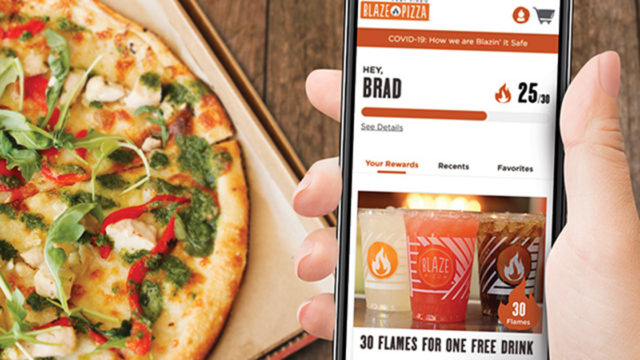Few industries were hit as hard by the pandemic as the restaurant business. After much of the country went into lockdown, restaurants—like almost every other business—were forced to close their doors. For many, though, the closure has been permanent.
But some parts of the industry—namely the quick-serve and fast-casual segments—have served as something of a laboratory for digital marketing during the crisis. The restaurants that refocused their online ordering and loyalty programs on their most valuable customers not only survived—they thrived. Their experience provides an important lesson for digital marketers in other industries.
Dine out or bust
As in other sectors, the success of a restaurant depends on capturing a disproportionate share of the wallets—or in this case, stomachs—of a small number of customers: the high-value targets.
These customers only make up about a quarter of fast-casual diners, yet account for 48% of the revenue and 63% of online ordering. In a typical month, these diners will visit an average of 14 different restaurant brands and spend about $12,000 a year dining out. This presents an enormous opportunity for digital marketers.
To capitalize on this opportunity, restaurants need to tailor their promotional messages and offers to these diners. They can do this by redirecting the marketing budget aimed at the 20% to 30% of customers who are disengaged and, for the most part, immune to marketing. By doing those two things, restaurants can double their ROI.
On-the-Go Convenience Seeker to the rescue
At the same time, it is important to recognize that not all high-value customers are the same. Two different types of customers comprise this 25%: the On-the-Go Convenience Seeker and the Social Restaurant Lover.
The first is motivated by ease; they seek a seamless experience that fits the contours of their busy lifestyle and want an easy-to-use app for convenience. They belong to loyalty programs but rarely use them. The second persona is motivated by the social aspects of dining out; they seek a sense of connection, community and VIP treatment.
When Covid hit and many restaurants had to close their doors or shift to curbside pickup, the habits of the on-the-go diner didn’t change. They accounted for 33% of money spent on meals and 36% of digital orders both in January 2020 (before Covid hit) and in July 2020 (after the crisis was well underway)—cementing them as the most valuable target. Even after the start of the pandemic, this group spent an average of $1,005 a month on meals.
A good app went further than discounts or a loyalty program.
Keep in mind, these are individuals who often order breakfast, lunch and dinner nearly every day because they find it easier than preparing food at home. Messaging around simple reordering, convenience and speed was key to engaging these core customers during the crisis. A good app went further than discounts or a loyalty program.
A tale of thriving and reinvesting
Wingstop is one restaurant chain that doubled down on digital amid the pandemic and saw major returns, according to investor reports. The company generates more revenue today than before the crisis hit. According to a March 2021 Goldman Sachs investor report, Wingstop “is viewed by investors as a Covid beneficiary, and not as a reopening story.”
A Goldman Sachs investor report from a month later notes that Wingstop’s return on its investment in digital during the pandemic prompted the chain to announce another three- to five-year investment to “rebuild its domestic technology stack, build a business intelligence platform and advance the end-to-end customer process. The core purpose of this is to make the company’s digital ordering and processing system, a key part of its growth, easily transferable to international markets, where current partners may not have a presence.”
This is an example of how some fast-casual restaurants capitalized on Covid and the changes to dining habits that it catalyzed. While these restaurants were limited in what they could do to appeal to the social diners—because the communal aspect of restaurants had vanished—they figured out how to effectively market to the on-the-go diner.
Other industries have the opportunity to benefit from what the dining sector learned during Covid. Whether they compete in banking, retail or travel and hospitality, companies should focus on their most valuable customers: those who buy often and at higher-dollar values because their underlying preferences and motivations are aligned with the features, benefits and value proposition of the brand. Skewing the marketing budget toward these customers and away from the disengaged—while continually fine-tuning the product, message and experience—can drive growth and profitability.










